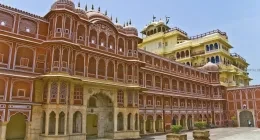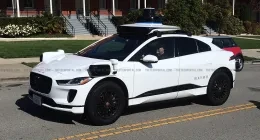Government has been aggressively making strides to further drive the country towards becoming a completely cashless economy. It all started out with demonetisation, and has been further backed by the release of their UPI-powered BHIM app and Aadhar-backed Aadhar Pay.
But, now the government is (allegedly) gunning for private players with today’s official launch of Bharat QR (or what some would like to call India QR). The launch event hosted in Mumbai saw RBI’s Deputy Governer Shri Rama S. Gandhi unveil the payment solution, saying that solutions like these are “essential to move towards a less-cash society”. The launch was also graced by esteemed members from the Reserve Bank of India (RBI) and National Payment Corporation of India (NPCI).
Now, coming to what exactly is Bharat QR? It is the latest government-led offering which is aimed at enabling digital payments at the merchant shops without the requirement of PoS (point-of-sale) or card-swiping machines. This solution is a government mandated common Quick Response (QR) code, which has been developed co-jointly by Mastercard, Visa, RuPay (operated by NPCI) as well as American Express. It aims to further ease the process of electronic retail payments, especially for those crippled after demonetisation.
At the launch event, the service has been kicked off in partnership with close to fourteen banks. The said QR code-based service is also aimed at providing interoperability of payments as long as banks in India are on board and provide users with the option to complete payments using Bharat QR within their banking apps on smartphones. This also simplifies the process of accepting payments for the merchants as they would no longer be required to spend money on expensive PoS machines.
Now, the customers would neither have to worry about having their cards on them all the time nor do they have to worry about their cards not being accepted at any particular payment location. Bharat QR code will now provide a unified interface for Visa, RuPay and Mastercard cardholders, also furthering the acceptance of UPI and Aadhar payment solutions. You’ll now only have to scan the said Bharat QR code at the merchant’s point-of-sale system and enter the transaction amount to make the payment.
You’ll now only have to scan the said Bharat QR code at the merchant’s point-of-sale system and enter the total transaction amount to make the payment. The said amount directly gets transferred from your bank account to the merchants without having to the need of swiping cards at machines. But, as you might have already guessed it, you’d require your bank to activate the said QR-based service in their own applications — so it also eliminates the need for another new application.
This development comes on the heels of Paytm’s massive ₹600 crore investment in the expansion of their own QR code solution. And one can call this an attention-seeking move and see this investment as a means of bulking up resources to compete against this newly launched service.
And for those wondering, how Bharat QR is different from Paytm or Mobikwik’s QR code payment system? Well, it is a common QR code platform that will soon be adopted and become acceptable by most merchants across the country. Bharat QR will also be directly adopted by the banks, thus eliminating any theft or security concerns. On the other hand, the QR codes that are provided by Mobikwik or Paytm work in their closed environments i.e you require each of their own apps.
Image Credits: Twitter/@mrinall
The Tech Portal is published by Blue Box Media Private Limited. Our investors have no influence over our reporting. Read our full Ownership and Funding Disclosure →






